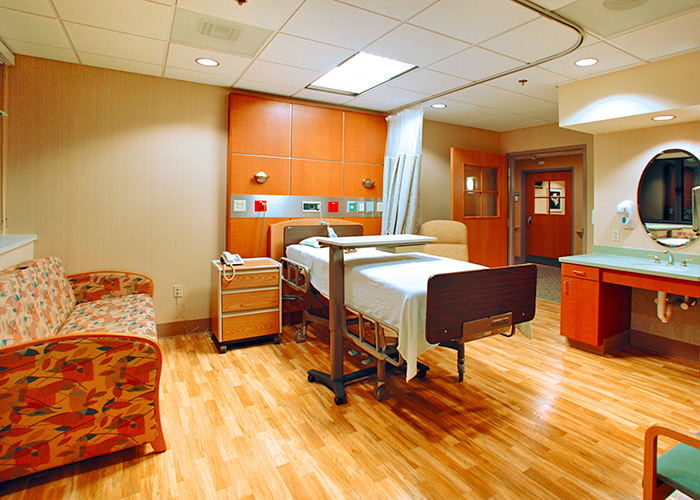Advantages of Transforming to Single-Patient Rooms
In an Industry Where Patient Experience is the Number One Priority

There has been debate in recent years as to what is most beneficial for patients and staff when it comes to single-patient rooms versus multiple-occupancy/semi-private rooms. With the current need in healthcare to make patient experience a number one priority and an increase in competition to occupy patient rooms, transforming rooms to single-patient can be beneficial for many reasons. Single-patient rooms go hand in hand with many current trends such as consumerism and the need for increased patient personalization. Not to mention, they can offer reduced risks for safety concerns, mixed-service units and staffing problems. Below, JPT Architects discusses several advantages regarding the implementation of single-patient rooms over multiple-occupancy rooms.
Infection Control
Patients expect to be released from the hospital in better condition than when they arrived but unfortunately data shows that this is not always the case. According to The Joint Commission, there are approximately 700,000 Hospital Acquired Infection (HAI) cases per year and 60,000 deaths directly related to HAI’s. The use of single-patient rooms reduces airborne, contact and waterborne transmission of HAI’s by increasing the capacity of isolation. Room cleaning is also easier for maintenance staff and air quality can also be better. Some patients may bring in dangerous pathogens from an initially unrecognized illness and with single-patient rooms it is less likely to be spread.
Control Over Physical Environment
The design of patient spaces is currently focused on offering more control over the physical environment and moving away from an impersonal or “clinical” feel. With more than one person per room, it is difficult to allow one patient to have full jurisdiction over temperature, lighting and noise control. Patients want to maintain their independence and freedom as much as possible when they are in the hospital. Making a patient’s room their own private space is the most relative experience they will receive in comparison to their own home. Noise reduction also helps to stimulate a healthy sleep cycle thus fostering a better path to wellness for the patient.
Family Involvement and Support
Single-bed rooms offer an increase in social interaction among a patient’s direct family due to more space and furniture accommodations. When a multi-occupancy room has two families present at the same time, a feeling of being overwhelmed can be felt by all in the room. Also, some family members may be inclined to leave as they do not want to interrupt the other non-related patient’s social interaction thus reducing the social interaction for their own relative. A sense of privacy, increased social interaction and well-being can be felt by the patient, family and staff in single-bed patient rooms.
Privacy
More privacy, dignity and confidentiality can be felt in patient rooms for circumstances that occur during a patient’s hospital stay. Doctors and patients are better able to disclose sensitive information and medical history in the privacy of a single-patient room, along with other hospital staff members. When it comes time for the patient to undergo an in-room examination, an increased level of comfort is felt without a bed neighbor possibly being able to hear and see what is being analyzed. Having to share a restroom with another person is also eliminated with single-patient rooms.
Staff
Not only can single-patient rooms be beneficial to patients, but healthcare facility staff also can see an increased level of patient care delivery. Bed management is easier when there is only one bed in the room and it is also less of a hassle to get beds in and out of single patient-rooms. There is no need to segregate male and female multiple-occupancy rooms because the single-patient room could be used for either sex. Additionally, staff will have a decrease in patient room transfers because the majority of problems from multiple-occupancy rooms are due to personality differences between patient roommates.
Although single-patient rooms offer many benefits, multiple-occupancy rooms and semi-private rooms may still be appropriate for some healthcare facilities that provide flex beds and in other circumstances.